Themed collection Fourth International Symposium on Metallomics, Oviedo, Spain

Front cover

Inside front cover

Back cover
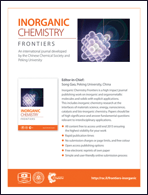
Contents list
4th International Symposium on Metallomics, 2013
This themed issue in Metallomics guested edited by María Montes-Bayón and Jörg Bettmer presents papers from the 4th International Conference on Metallomics, Oviedo, Spain.

Metallomics, 2014,6, 187-188
https://doi.org/10.1039/C4MT90002B
Metallothioneins (MTs) in the human eye: a perspective article on the zinc–MT redox cycle
A working model of the zinc–metallothionein redox cycle is proposed to be used as a therapeutic target against oxidative stress in ocular diseases, such as age-related macular degeneration.

Metallomics, 2014,6, 201-208
https://doi.org/10.1039/C3MT00298E
Nanometallomics: an emerging field studying the biological effects of metal-related nanomaterials
This minireview proposes the term “nanometallomics” and summarizes the current understanding of the pharmacokinetic behavior and the fate of metal-related nanomaterials in biota and their interaction with biomolecules.

Metallomics, 2014,6, 220-232
https://doi.org/10.1039/C3MT00316G
Disruption of zinc homeostasis and the pathogenesis of senile dementia
Zinc (Zn) is an essential trace element that is abundantly present in the brain. Despite its importance, Zn dyshomeostasis is implicated in the pathogenesis of various neurodegenerative diseases.

Metallomics, 2014,6, 209-219
https://doi.org/10.1039/C3MT00257H
Recent advances in the understanding of the role of zinc in ocular tissues
Retinal zinc homeostasis is dysregulated in systemic zinc depletion, aging and age-related macular degeneration. Manipulation of zinc metabolism in these situations might improve retinal function.
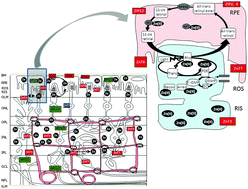
Metallomics, 2014,6, 189-200
https://doi.org/10.1039/C3MT00291H
Interactions of gold-based drugs with proteins: crystal structure of the adduct formed between ribonuclease A and a cytotoxic gold(III) compound
The reaction of Auoxo6, a dinuclear gold(III) complex, with the model protein bovine pancreatic ribonuclease is explored here by X-ray diffraction and ESI mass spectrometry.

Metallomics, 2014,6, 233-236
https://doi.org/10.1039/C3MT00265A
The effects of silver ions on copper metabolism in rats
The serum ceruloplasmin-associated copper deficiency induced by a silver-containing diet in rats can be compensated by extrahepatic ceruloplasmin synthesis if rats receive silver from birth.

Metallomics, 2014,6, 1970-1987
https://doi.org/10.1039/C4MT00107A
Cadmium toxicity in Mus musculus mice based on a metallomic study. Antagonistic interaction between Se and Cd in the bloodstream
Cadmium (Cd) is an important inorganic toxicant in the environment which impacts on human health.

Metallomics, 2014,6, 672-681
https://doi.org/10.1039/C3MT00350G
Mechanisms of Hg species induced toxicity in cultured human astrocytes: genotoxicity and DNA-damage response
Inorganic and organic mercury species strongly disturb a DNA damage induced signalling reaction in human astrocytes.

Metallomics, 2014,6, 662-671
https://doi.org/10.1039/C3MT00337J
On the molecular relationships between high-zinc tolerance and aconitase (Aco1) in Saccharomyces cerevisiae
In yeast, the lack of mitochondrial aconitase activity determines high-zinc tolerance, which is accompanied by the alteration of several low-iron sensor signals.

Metallomics, 2014,6, 634-645
https://doi.org/10.1039/C3MT00360D
Investigating the response of cuproproteins from oysters (Crassostrea gigas) after waterborne copper exposure by metallomic and proteomic approaches
Cuproproteins in cytosols of organs of a waterborne Cu-exposed pacific oyster (Crassostrea gigas) were studied by non-denaturing PAGE and SDS 2-DE, LA-ICP MS and μRPC-ESI-FT MS.
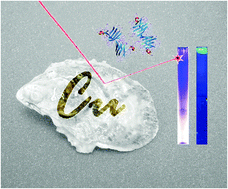
Metallomics, 2014,6, 338-346
https://doi.org/10.1039/C3MT00375B
Determination of elemental distribution in green micro-algae using synchrotron radiation nano X-ray fluorescence (SR-nXRF) and electron microscopy techniques – subcellular localization and quantitative imaging of silver and cobalt uptake by Coccomyxa actinabiotis
Subcellular localization and quantitative elemental imaging in micro-algae using SR-nXRF and electron microscopy.
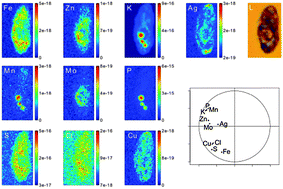
Metallomics, 2014,6, 316-329
https://doi.org/10.1039/C3MT00281K
The role of glutathione in mercury tolerance resembles its function under cadmium stress in Arabidopsis
Recent research efforts have highlighted the importance of glutathione (GSH) as a key antioxidant metabolite for metal tolerance in plants.

Metallomics, 2014,6, 356-366
https://doi.org/10.1039/C3MT00329A
Absorption, distribution, metabolism and excretion of selenium following oral administration of elemental selenium nanoparticles or selenite in rats
A suspension of elemental Se nanoparticles or a solution of Se(IV) was repeatedly administered by oral gavage to female rats at 0.05 or at 0.5 mg Se kg−1 bw per day. After 28 days tissues and organs were collected and analysed.
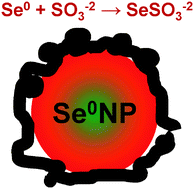
Metallomics, 2014,6, 330-337
https://doi.org/10.1039/C3MT00309D
Application of metallomic and metabolomic approaches in exposure experiments on laboratory mice for environmental metal toxicity assessment
Metals have a central role in biological systems, regulating numerous cellular processes, and in other cases having toxic or deleterious effects on the metabolism.
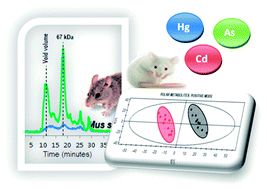
Metallomics, 2014,6, 237-248
https://doi.org/10.1039/C3MT00302G
Antagonistic interaction of selenomethionine enantiomers on methylmercury toxicity in the microalgae Chlorella sorokiniana
C. sorokiniana exposed to chiral forms of SeMet and MeHg+ indicated that D-SeMet transforms into other Se metabolites but it is not directly involved in the detoxification mechanism of MeHg+.

Metallomics, 2014,6, 347-355
https://doi.org/10.1039/C3MT00296A
Selectivity and specificity of small molecule fluorescent dyes/probes used for the detection of Zn2+ and Ca2+ in cells
Fluorescent dyes are widely used in the detection of labile (free or exchangeable) Zn2+ and Ca2+ in living cells.
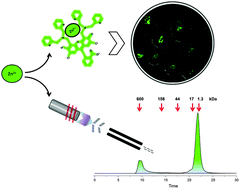
Metallomics, 2014,6, 301-315
https://doi.org/10.1039/C3MT00283G
Characterization of metal profiles in serum during the progression of Alzheimer's disease
Metal dyshomeostasis is closely related to Alzheimer's disease, so the characterization of the metal profiles in these patients is of special interest for studying associated neurodegenerative processes and to discover potential markers of disease.
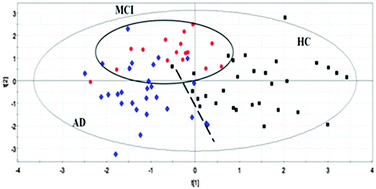
Metallomics, 2014,6, 292-300
https://doi.org/10.1039/C3MT00301A
Full characterization of the Cu-, Zn-, and Cd-binding properties of CnMT1 and CnMT2, two metallothioneins of the pathogenic fungus Cryptococcus neoformans acting as virulence factors
The Cryptococcus neoformans MTs are high-capacity Cu-thioneins built by repeated Cys-rich regions, each one probably giving rise to a Cu5-cluster.

Metallomics, 2014,6, 279-291
https://doi.org/10.1039/C3MT00266G
Distribution of trace elements in the mammalian retina and cornea by use of particle-induced X-ray emission (PIXE): localisation of zinc does not correlate with that of metallothioneins
Zinc, iron and copper corneal and retinal distribution is non-homogenous with zinc highest levels not corresponding with those of metallothioneins.

Metallomics, 2014,6, 274-278
https://doi.org/10.1039/C3MT00271C
Metal sensing and signal transduction by CnrX from Cupriavidus metallidurans CH34: role of the only methionine assessed by a functional, spectroscopic, and theoretical study
The use of the thioether sulfur in the coordination sphere of a sensor of Ni and/or Co is unprecedented.
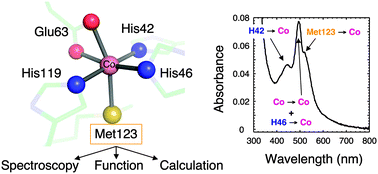
Metallomics, 2014,6, 263-273
https://doi.org/10.1039/C3MT00248A
3-Hydroxy-4-pyridinone derivatives as metal ion and amyloid binding agents
Three rationally designed benzothiazole and benzoxazole 3-hydroxy-4-pyridinone derivatives are evaluated for their ability to bind metal ions and the amyloid-beta protein.

Metallomics, 2014,6, 249-262
https://doi.org/10.1039/C3MT00135K
About this collection
This is a collection of papers highlighting the work presented at the 4th International Conference on Metallomics, July 8-11, 2013, Oviedo, Spain. Guest Edited by María Montes-Bayón and Jörg Bettmer. New articles will be added to this collection as they are published.